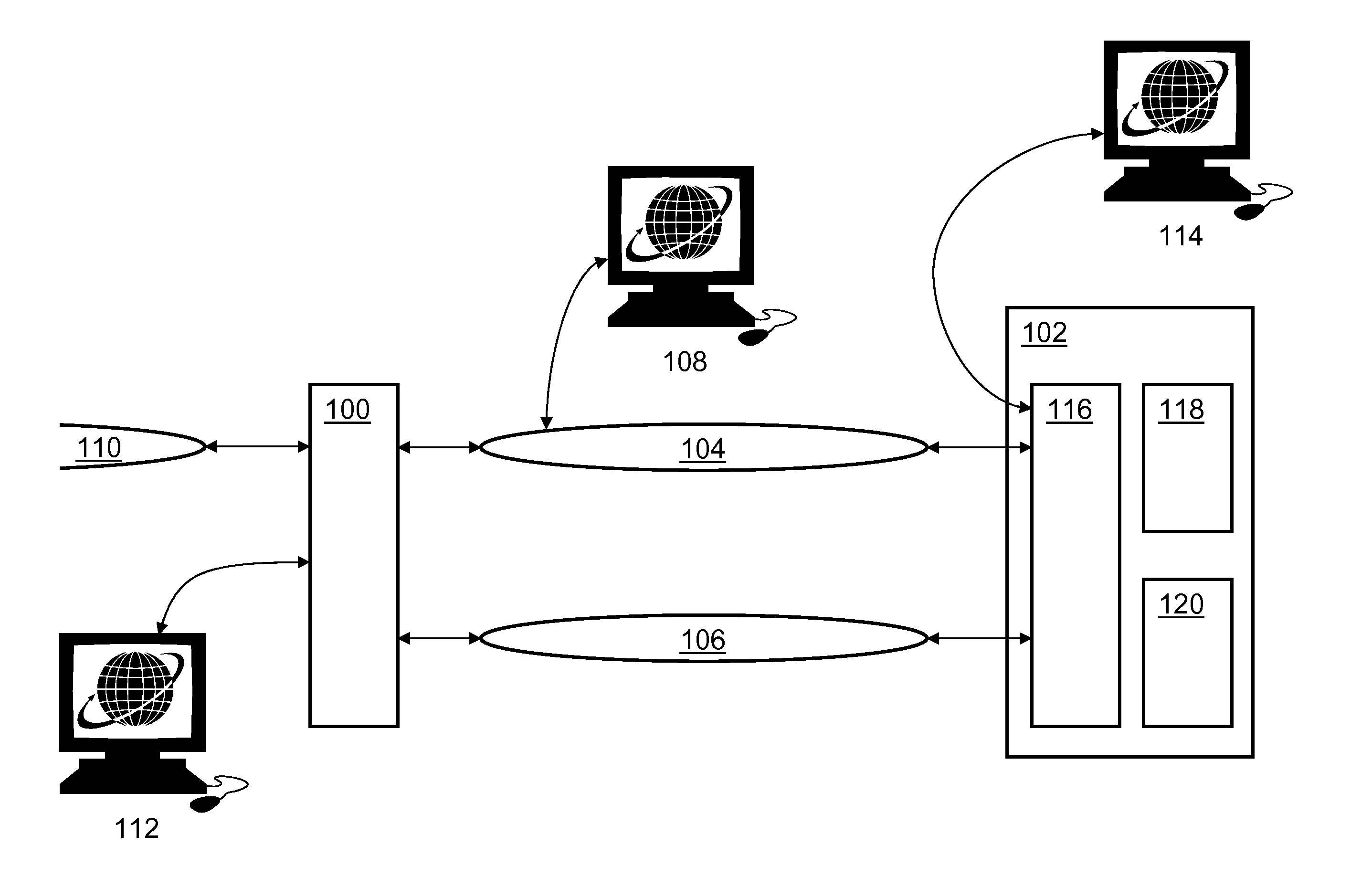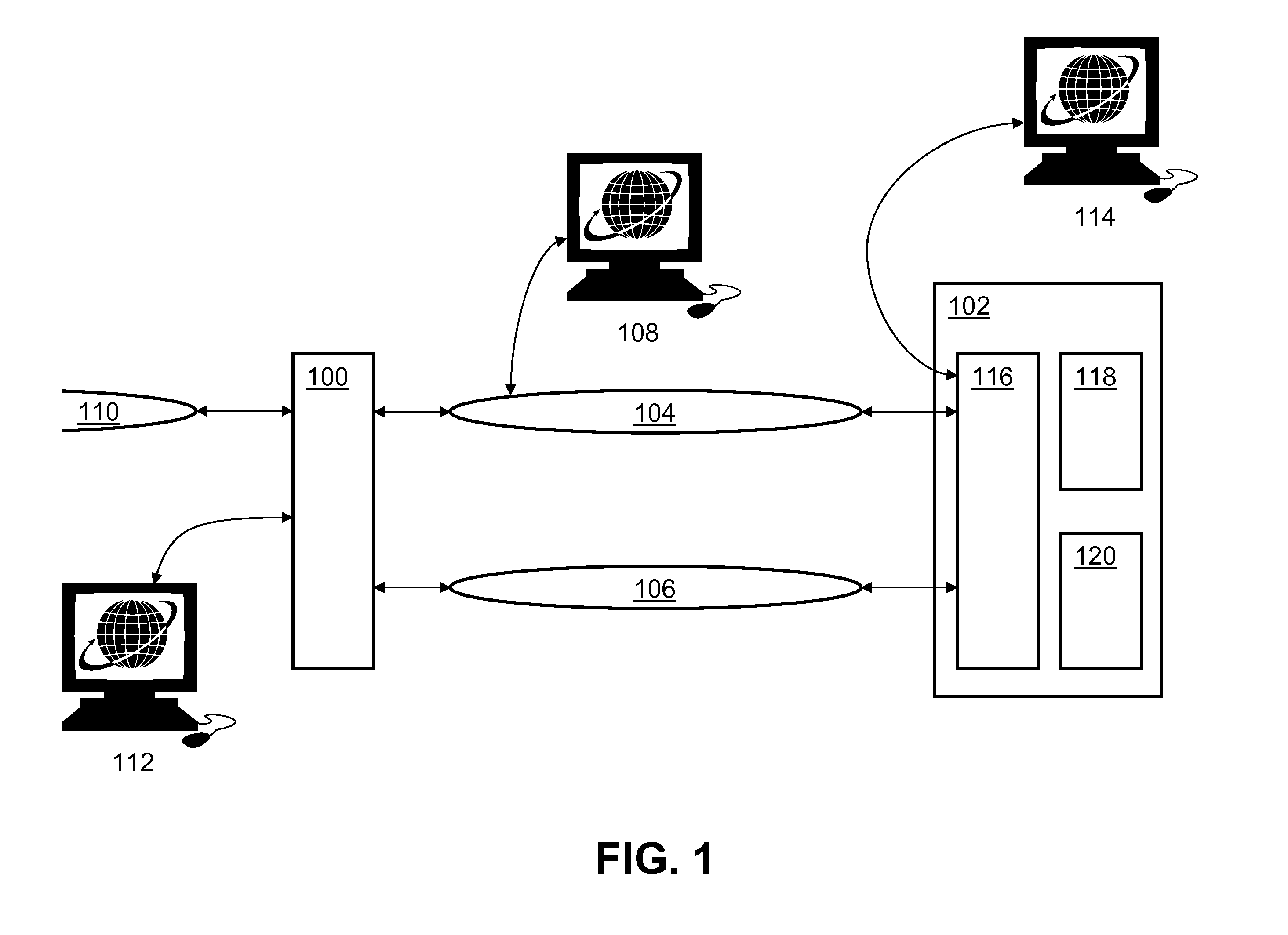Aggregating ports while allowing access to singleton ports
a single-ton port and port aggregation technology, applied in the field of computer communication, can solve the problem that the end-point device cannot communicate with the additional device, and achieve the effect of small cos
- Summary
- Abstract
- Description
- Claims
- Application Information
AI Technical Summary
Benefits of technology
Problems solved by technology
Method used
Image
Examples
Embodiment Construction
[0015]Turning to the drawings, wherein like reference numerals refer to like elements, the invention is illustrated as being implemented in a suitable environment. The following description is based on embodiments of the invention and should not be taken as limiting the invention with regard to alternative embodiments that are not explicitly described herein.
[0016]FIG. 1 shows a representative local communications environment. Two bridges 100, 102 are connected by at least two communications links 104, 106. The bridges 100, 102 of FIG. 1 are shown as stand-alone devices. In some situations, especially in homes or other small environments, there are no stand-alone bridge devices. Instead, bridging functions are performed by devices such as personal computers, networking hubs, or set-top boxes.
[0017]The communications links 104, 106 can represent any number of physical and logical technologies. They may be wired, optical, or wireless, for example. They do not need to be based on the s...
PUM
 Login to View More
Login to View More Abstract
Description
Claims
Application Information
 Login to View More
Login to View More - R&D
- Intellectual Property
- Life Sciences
- Materials
- Tech Scout
- Unparalleled Data Quality
- Higher Quality Content
- 60% Fewer Hallucinations
Browse by: Latest US Patents, China's latest patents, Technical Efficacy Thesaurus, Application Domain, Technology Topic, Popular Technical Reports.
© 2025 PatSnap. All rights reserved.Legal|Privacy policy|Modern Slavery Act Transparency Statement|Sitemap|About US| Contact US: help@patsnap.com



